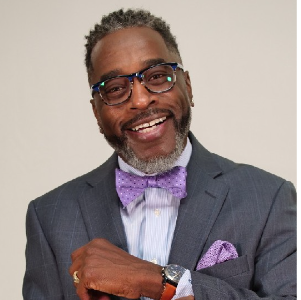On December 11th, Bob Edelstein, founder of Existential Humanist NW, presented about his passion for the EH perspective. Starting with an introduction to how he came to encounter Existential Humanism and therapy itself, Bob told us how he studied economics as an undergraduate student. His assumptions about therapy came from a culture centered on Freud and analysis. His feelings changed when he read Carl Rogers for the first time, and was moved by the idea that we are each the author of our own lives. Deeply resonant with this message as a younger man, his life’s journey has been about deepening and promoting this notion. 40 years into his practice as a therapist, he named he is still so passionate about it. He and his wife Maggie joke that he is the happiest person on earth she’s ever seen to go to work each morning.
Bob spoke to how existential psychotherapy emphasizes certain central dichotomies inherent in being human, the limits of being human and agency—or as Yalom names, freedom and agency, meaning and meaninglessness, life and death. Meanwhile, humanistic psychotherapy orients itself around potential and possibility. Naturally, these two modalities go well together, emphasizing both limits and potential. Existential Humanistic (EH) Psychotherapy is process-orientated. It orients around central themes and explores topics like authenticity, agency, and potential. Bob’s presentation explored some of these tenets and the ways that Existential Humanism as an approach orients to the therapeutic process.
- Beneath all of this is the notion that we exist. The central task of being human is, therefore, to make meaning of this existence, which we do through our experiences of being alive. Each human has a unique means of doing this. In an Existential Humanistic approach, the uniqueness of these ways of dealing with existence is valued, which is something both Carl Rogers and Abraham Maslow talk about at length.
- Each Client is different. Or, as Bob pointed out, even the same client is different! Each therapy with each person, and each session, is unique. We change from moment. There is no such thing as objectivity in human experience or relating. We all see things through our own lenses, which are always changing.
- EH therapy is phenomenologically based. It is an exploration of each human’s experience. Humans aren’t methods or theories, and neither can we be as therapists. As therapists, we approach the process through our own lived experiences, too.
- Within our self-world constructs, there are universal, cultural, personal and existential themes. For example, we all deal with the fact that we will die. We will all deal with awareness and relationships. Among these cultural themes in the Western world, for example, is the feeling of not being enough.
As therapists, we journey with our clients through these themes, centering some of our processes in EH therapy around ways of being with another’s experience that Bob laid out:
- Firstly, Bob spoke about presence. Presence emphasizes being with the client. Bugental speaks of presence as the quality of this participation. Presence and authenticity go hand in hand. By being present with a client, we facilitate their going deeper into their own levels of authenticity.
- Secondly, EH therapy is process-oriented. Psychotherapy is an exploration of the way a client is with themselves and the way they are with their therapist. Content emerges from this process-orientation.
- We explore themes of authenticity. What is happening and what are some of the roadblocks that keep us from what we want to happen.
- Lastly, EH therapy concerns actualization. Through exploring these experiences in ourselves and in relationship, we manifest what we want to have happen in the world by exploring how we want to relate with our worlds.
After going through these core tenets and ways of orienting as an EH therapist, we engaged in a discussion with some questions and answers. One participant asked the question, “how do we help clients to move past stuck points”? Bob responded that rather than moving past the stuck points, we can help clients go into the stuck points. We do this through being present to what is going on, letting the person be with the process and whatever comes up. If it is an exploration of stuckness, he suggested, “how do you feel that stuck feeling”? We can’t do the work for them, but we can be with a person as they peel back protective layers and notice core wounding. This centers around the belief that whatever arises leads to more wholeness. The aim is to have choice.
After a discussion, Bob led a demo therapy session with board member, Jackie Potter. Throughout this rich demonstration, Bob demonstrated some of the ways he supports a client in deepening to their experience. He led with prompts like, “see what comes”, and “stay with it”, and “what else is there?”. He also asked things like, “how is it going for you now, in terms of that feeling?”, and checked on his understanding of something with questions like, “see if this resonates…”. This language and thematic basis was unique to Bob, as well as to Jackie. We saw how their own unique relationship both held a container and served as a foundation for this exploration.
After the demonstration, many participants were touched by what arose, and the many themes and identifications we had with the intimate material that Jackie spoke to, demonstrating themes of simultaneous uniqueness and universality. The demo was a deep opportunity to see some of these themes and orientations in practice, and gave us all an opportunity to dialogue about the depth of content that can emerge from just being present with another and supporting their own journeying.
In a time in history of so much chaos and confusion, I went into this Lunch and Learn feeling somewhat bogged down. Yet as often happens over the course of being with the exploration of real, substantive and authentic truths of another’s lived experience, I found myself uplifted and inspired, re-oriented in my own self to the nature of being alive and the privilege to sit with both ourselves and another’s exploration of experience, inherently messy, weighty, and encumbered as it can be expansive and meaningful.




